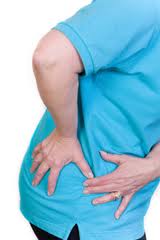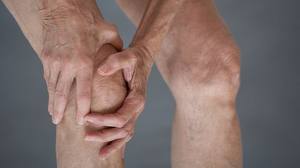 Do you have pain and tenderness in your feet, knees, hip and back joints? Are your joints stiff when you walk up in the morning or after sitting for awhile? Are your joints just not as flexible as they once were? If you answered “yes” to any of these questions, then you may be one of the 27 million Americans who suffer from osteoarthritis (OA).
Do you have pain and tenderness in your feet, knees, hip and back joints? Are your joints stiff when you walk up in the morning or after sitting for awhile? Are your joints just not as flexible as they once were? If you answered “yes” to any of these questions, then you may be one of the 27 million Americans who suffer from osteoarthritis (OA).
OA is the most common form of arthritis and is caused by the “wear-and-tear” on your joints’ cartilage. Cartilage is the firm, rubbery tissue in the joints that cushions the bones, allowing them to move easily over one another. When the cartilage breaks down, it causes the bones to rub together, resulting in pain, stiffness and loss of mobility in the joint. This disorder can affect any joint in your body; however, it more commonly affects the joints in your neck, hands, lower back, hips and knees.
What Causes OA?
OA is often due to aging with the symptoms usually first occurring in middle age. Most adults will experience symptoms by age 70. However, OA occurs more frequently in women than men.
Other factors that can cause you to develop OA include obesity, injury, overuse of the joints from repetitive motions, heredity, muscle weakness surrounding the joint and other diseases, like rheumatoid arthritis, gout or bleeding disorders.
What Are the Symptoms?
OA symptoms often develop slowly and get worse over time. Symptoms include:
- Pain in your joints during or after moving.

- Tenderness in your joint when you touch it.
- Joint stiffness first thing in the morning or after periods of rest.
- Less flexibility and range of motion in your joints.
- A grating sensation when moving your joints.
- Decline in coordination and posture.
- Difficulty walking due to pain and stiffness.
How Is OA Treated?
If you suspect you have OA, you need to see your doctor for diagnosis and treatment.
With proper treatment, you can have pain relief and continue to live an active life. Some treatment options include:
- Prescription and over-the-counter pain medications – Controls pain and inflammation.
- Physical therapy – Improves muscle strength, joint mobility and balance.
- Occupational therapy – Teaches you how to move correctly to reduce joint damage due to repetitive movements.
- Regular exercise – Strengthens your muscles and bones, and increases your flexibility and stamina.
- Weight management – Reduces stress and pressure on your joints.
- Protein injections – Helps rebuild damaged cartilage.
- Joint Replacement Surgery – Replaces damaged joints with prostheses.
- Braces – Immobilize and support your joint, so you can keep pressure off of it and allow it to heal.
- Shoe inserts – The ezWalker® Performance Insole evenly redistributes your weight on your feet. This insole is biomechanically designed to support your arches, help you walk more efficiently, and help you obtain pain relief. The ezWalker® has been proven to improve foot health in as little as 6 months to a year.
The ezWalker® is ultra thin, 3/4 length, and transfers easily from shoe to shoe. You’ll no longer need special shoes to wear your custom orthotic. Plus, the ezWalker® can be worn in almost any type of footwear. However, a good fitting pair of shoes made of quality construction is recommended to best relieve the pain of OA and other chronic pain issues.
So, reduce the stress on your foot, knee, hip, and lower back joints caused by OA damage – try the ezWalker® insole today! You’ve got nothing to lose, but your pain.
Because … when your feet feel good, you feel good.
Note: If you follow these guidelines and your pain persists, you may have a more serious condition. See your physician for a more complete diagnosis and treatment.

